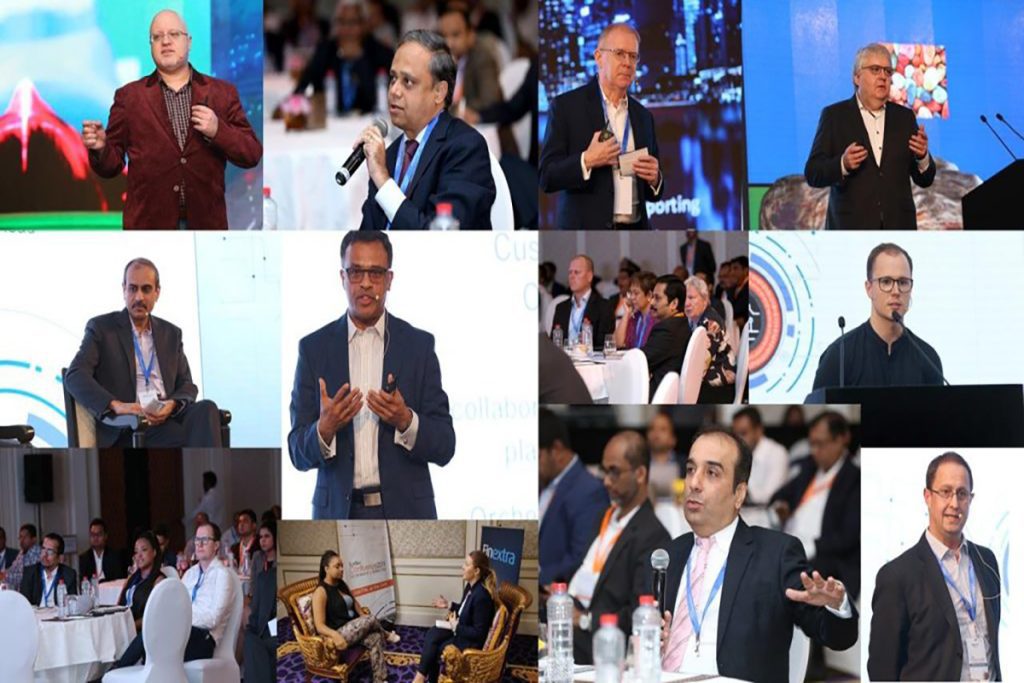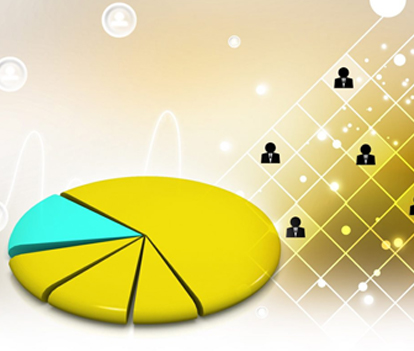In this converging world where banks are losing their traditional marketspace, what should banks do?
There are four facets of approach that a bank can do – 1) Collaborate and not Compete; 2) Grow beyond banking; 3) Provide an Experience and 4) Expand the reach
- Leverage the power of collaboration – As mentioned in an HBR article, “Collaboration is the new competition”. To stack up to today’s interconnected problems, banks will have to collaborate with other industries to create a larger collective impact.
- Think beyond operating in the current industry and operating models – The future belongs to enterprises which look beyond the borders of industry they operate in.
- Provide customers with “experience” and not products – As banking products become commoditized, it is important that banks create an experience. Only banks providing the best customer experience will have the highest customer retention rate.
- Rapidly expand the reach of the banks – While banks have to focus on creating experience, it is important that the banks also widen the reach (not just through collaboration). Scale combined with digitalization will bring down operational costs.
Leveraging the power of collaboration
Banks can collaborate with complementary as well as disruptive solution providers across industries to create a win-win situation for all stakeholders involved.
For example, banks can create joint ventures with telecom operators to reach the unbanked in areas where mobile penetration is higher than the banking reach. Banks are also open to collaborating with fin-tech companies to speed up their time to market and deliver new services to customers. The recent acquisition of Simple, a digital banking company by BBVA, a multinational Spanish banking group, is a validation of this fact. While such a collaboration with fin-tech companies might not add to the massive set of customers that a bank has, it will surely add to the plethora of services a bank offers while also offering a higher customer experience. Banks can also collaborate with technology giants such as Google (banks can leverage projects such as Google Loon to reach traditionally unreachable markets), social media companies like Facebook/LinkedIn (banks can use the data from Facebook and LinkedIn to create a credit score rather than prepare the credit information using traditional means) or with instant messaging platforms like WhatsApp/WeChat (banks can create peer to peer financial transaction and lending platforms).
The concept of “Banks as a platform” also necessitates the need for such a collaboration where banks can rapidly enhance their digital offerings using 3rd party applications and services.
Collaboration can also be with the customers. For example, Widiba, an Italian bank, asked customers to give ideas for product design which they delivered in a very short time.
Collaboration will also enable banks to focus on their core competencies while non-banking companies can focus on creating technological innovations which will bring in exponential benefits to the customers.
Think beyond operating in the current industry and conventional models
While banks collaborate to improve the experience, services and products in the current industry, banks also need to look out for opportunities in other horizontal and vertical industries.
Traditionally banks also operate in the insurance industry, mortgage industry etc. where the lines of convergence are blurred. But recent trends also indicate banks moving to hitherto uncharted areas. While we have seen several telecom companies moving towards the banking industries, with the concept of mobile virtual number operator (MVNO), banks are becoming telecom operators. An MVNO does not invest or own any radio spectrum but leases the network services from an existing telecom operator at wholesale rate. Kenya’s largest bank, Equity Bank, has launched its own telecom network Equitel. First National Banks has also launched its own mobile network. This model will help banks reach the unbanked through their own networks and leverage the power of internet to improve services like online payments while also garnering the data regarding customers.
Banks also can move towards offering other services such as a personal finance management app (ICICI bank in India offers similar services). UBank, an Australian bank, has launched an app called “PeopleLikeU, which compares the spending pattern of people with peers.
It is also important to note that while shopping and other similar services have moved online, there is still a large demand for retail shops and the experiences they provide. In line with this, banks are also experimenting with providing the best of both the worlds – retail and banking. While several banks are opening up mini branches at retail outlets, some banks are also opening up retail outlets at their branches.
Banks also have access to a large set of data from which they can gather insights. For example, Nedbank offers organizations with market insights gathered from their customer data. Banks are also creating advisory services for small and medium enterprises. Deniz Bank, Turkey is offering a platform for SMEs to gain digital reach through a suite of services like digital marketing to operations. Banks can also look towards moving into non-conventional lending models like Kickstarter, Kabbage or to non-traditional money transfer models like TransferWise.
It is important to keep in mind while convergence in the banking world is more inward focused, banks also need to focus moving towards the outside world to keep up with the pace.
Provide customers with “experience” and not products
Traditionally, banks have focused on creating a plethora of products and services. But, many banks do not focus on the all important aspect of customer experience. Opening a bank account or requesting for a credit card involves filling up of several pages of documents.
The goal for banks in this digital and converging world should be to provide customer experience and relationship that is IIP – Intelligent, Intimate and Personal
Banks will need to focus on providing the experience of banking to the customers which is simple and sufficient. The recent push by Open Banking Standard to have industry standards for customer data is one such initiative aimed at making the customer experience simpler and standard across banks.
In the digital world, where the focus is towards creation of apps and other similar technologies, banks also need to bring in the concept of positive human touch to customer experience. Banks need to use customer insights to better engage with customers and prospects at every touchpoint. A recent World Banking report mentions that “Bank’s efforts to provide enhanced services are falling short of customers’ desires and expectations leading to stagnation of Customer Experience Index (CEI) over past two years.”
Customer Experience is not limited by having the right color at the retail store or providing the most customizable product. Banks also need to focus on 1) creating the best user experience, 2) helping customers choose the next best action, 3) being able to provide seamless customer experience across multiple channels and 4) focusing on digitizing maximum processes while focusing on design thinking and keeping it simple.
To do this effectively, banks need to further leverage the power of technology – data, cognitive analytics, machine learning. For example, banks can use these technologies to forecast a life event (like buying a car or a home) in the life of a customer and provide necessary offers for the same.
To support this, banks would need IT platforms that are highly agile and can be customized to the needs of the customer and other stakeholders.
While banks need to focus on leveraging the power of technology, it is important that the best customer experience is never complete without the focus on top three customer requirements from banks (as per a report by Gartner) – safety, security and fairness. Banks will need to go the extra mile to be more transparent and fair in all their interactions with all the stakeholders. This will help banks bring in the human touch and gain the trust of its customers.
To increase the personal touch, banks are also leveraging the power of Internet of Things. While biometrics sensors are common, banks are now leveraging location data to provide information to customers. Visa Mobile Location Confirmation is an optional service offered through participating banks mobile apps. This uses mobile geo-location data in real time as an additional input into Visa’s predictive fraud analytics. Alfa-Bank Sense is an advanced mobile application providing real time predictions of customer behavior offering the services they might need. It’s more gentle and personal than the ordinary bank app and communicates like Facebook Messenger. Idea Bank of Poland has come up with the idea of a car loan which needs to be paid as we drive.
Banks need to understand that this is the age of Uber. Every industry is searching for the “Uber for X” model – in banking context, it is to have on-demand customized banking. “One size fits all” is not the idea anymore. Rephrasing a quote by Seth Godin, it will be enterprises that win in the future will “deliver
anticipated, personal and relevant products to people who actually want to get them, not the ones that try to sell average products for average people.”
Rapidly expand the reach of the banks and the transactions
To maximize the power of digitalization, it is important that banks extend their reach further. While banks can collaborate with telecom companies to extend their reach, banks will also have to think out of the box to widen their reach.
Banking reach is different in different parts of the world. While it is low in Africa, it is very high in developed countries). Banks are using innovative approaches to attract new customers. Citibank reported an increase of 472% after implementing online instant account opening, and only needed to hire an additional 38% of new employees to handle the growth. As mentioned earlier, banks are also tying up (o acquiring startups) to increase their reach. In India, the new initiative of small banks will help banks reach rural areas. Banks are also looking at tie-ups to increase the reach of their transactions as well as simplify them. The Indian bank, Federal Bank has tied up with payment services provider Oxigen expand the bank’s e-collection facility to the latter’s nearly 2 lakh-plus retail outlets. India’s 2nd largest lender has tied up with the Indian body of trade owners to offer cash withdrawal facility in retail stores. Banks are also tying up with Banqu which aims at providing economic identities for the unbanked.
While banks move ahead on their path of creating financial inclusion for all, they will have to be aware of the converging world, especially in a digital world. In the future, banks may different from what they are now, but as Bill Gates said, Banking will always continue to exist.
Summarizing the actions
While there are much more things that a bank can do in this age of convergence, Industry convergence represents an unprecedented growth for the banks, but it is also a threat to a bank’s core business. Only banks which focus on collaboration and simultaneous growth will succeed in this journey. Banks also need to be cognizant of the fact that there is no single action that is relevant for all the markets – the actions and plans to succeed in this age have to be localized.
From the banks’ side, it will also require tremendous planning, investment and judicious decision making while not sacrificing the appetite to take risks. Banks also have to realize that the current value chain in which they operate is unbundled and the key is to define business models which will work in this environment while leveraging the best of the technologies. By making strong, yet difficult decisions now, banks can surely be more successful in the long run.
Many banks are already on this path. What will differentiate the winners from others will be how they will leverage this explosion of information, gather insights from the same and take actions based on these insights. For banks which succeed in this age of convergence and digitalization, the long term path will look more promising.
https://hbr.org/2013/01/collaboration-is-the-new-compe
https://www.cognizant.com/whitepapers/Creating-a-Banking-Experience-that-Keeps-Customers-Coming-Back-codex1378.pdf
http://blogs.gartner.com/jake-sorofman/gartner-surveys-confirm-customer-experience-new-battlefield/
Karthik V J









